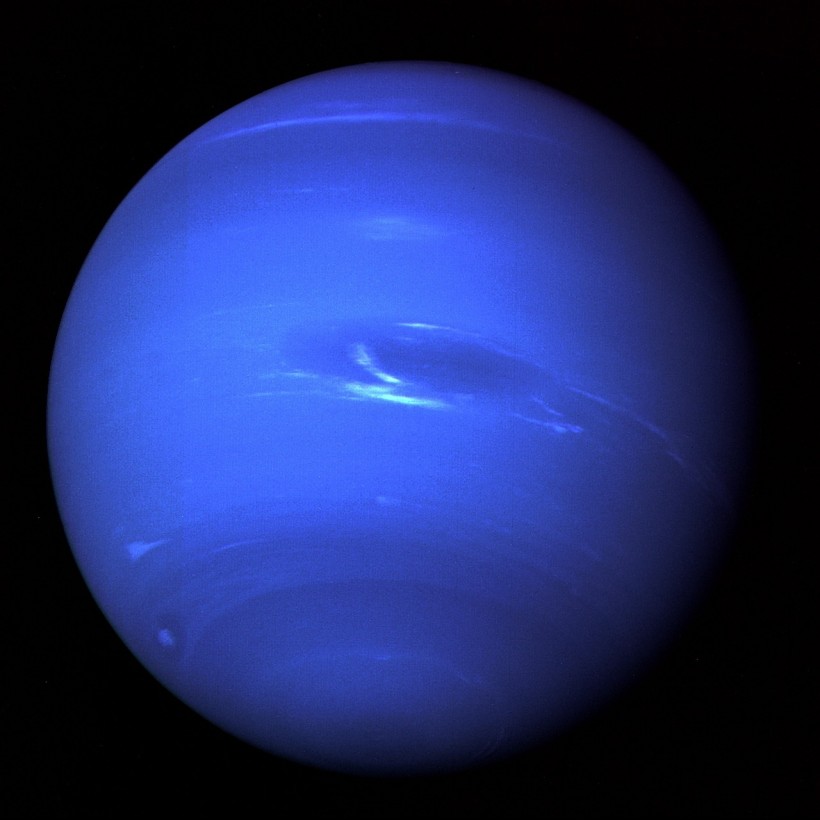For the first time, astronomers have spotted a massive enigmatic dark mark on Neptune's surface from Earth. The accompanying perplexing bright area nearby remains unexplained.
Although the origins of this shadowy feature on the distant ice giant are still unclear, recent observations conducted with the Very Large Telescope (VLT) offer the potential to provide insights into this enigma.

Earth-Based Observations Reveal the Secrets of Neptune's Dark Spot and Its Puzzling Bright Companion
Neptune's Mysterious Dark Spot
In 1989, NASA's Voyager 2 spacecraft spotted a dark spot on Neptune while exiting the solar system. Astronomers were accustomed to observing dark spots on planetary surfaces, such as Jupiter's long-lasting "Great Red Spot" studied since the 1800s.
The peculiar aspect of Neptune's dark spot was its disappearance following Voyager 2's examination. However, in 2018, the Hubble Space Telescope identified multiple fresh dark spots on Neptune, spanning both its northern and southern hemispheres.
University of Oxford's Professor Patrick Irwin was among the scientists intrigued by this development and spearheaded an investigation utilizing the VLT's Multi Unit Spectroscopic Explorer (MUSE) to scrutinize Neptune, concentrating on one of the spots situated in the planet's northern hemisphere. The team aimed to refute a prior hypothesis, suggesting that the dark spots result from cloud gaps above Neptune's icy surface.
Irwin, the primary author of a paper, explained that the enigmatic dark spots, spanning 6,200 to 9,300 miles (10,000 - 15,000 km) in diameter, are both vast and perplexing. He highlighted that while the initial observation of Neptune's "Great Dark Spot" by Voyager 2 led to speculations about its similarity to Jupiter's "Great Red Spot," subsequent investigations have clarified their distinctiveness.
He further mentioned the novel discovery of a radiant counterpart, named DBS-2019, adjacent to the dark spot, marking an unprecedented finding.
READ ALSO: Neptune's Trojan Asteroids Mysteriously Redder Than Other Space Rocks in the Solar System
Uncovering the Mysterious Dark Spot's Origins
Using the European Southern Observatory's VLT in Chile, equipped with the MUSE instrument, Professor Patrick Irwin's team embarked on the unprecedented task of observing and analyzing Neptune's dark spots.
This marked the first time these features had been observed through a ground-based telescope, enabling them to conduct 3D spectroscopic measurements, offering insights into the dark spot's behavior across various atmospheric depths.
Irwin noted in a news release that the study was driven by a desire to unravel the mysteries behind these features, which led them to employ innovative observation techniques and advanced instrumentation.
Researchers used distinct light wavelengths to explore varying atmospheric depths, influenced by composition and reflective properties. With the MUSE instrument, a 3D reflection spectrum was generated by Irwin's team, revealing how sunlight is reflected at different atmospheric levels.
Their 2019 observations of the dark spot, named NDS-2018, indicated its location in an atmosphere region with low light reflection, dispelling the notion that it might result from a cloud clearance exposing darker layers beneath.
The dark spot's obscurity on Neptune's surface appears to result from atmospheric aerosol haze, situated at a depth around 5 bar where hydrogen sulfide can condense into ice crystals, prompting two potential explanations identified by Irwin's team.
They discussed the full findings of their study, titled "Cloud Structure of Dark Spots and Storms in Neptune's Atmosphere," in the journal Science.
RELATED ARTICLE: Neptune's Atmosphere Colder Than We Thought As It Dropped Temperatures in 2 Decades
Check out more news and information on Space in Science Times.




![Earth's Quasi-Moon Kamo‘oalewa Could Originate From Lunar Surface Not Asteroid Belt [Study]](https://1721181113.rsc.cdn77.org/data/thumbs/full/53275/89/56/50/40/earths-quasi-moon-kamo-oalewa-could-originate-from-lunar-surface-not-asteroid-belt-study.png)









